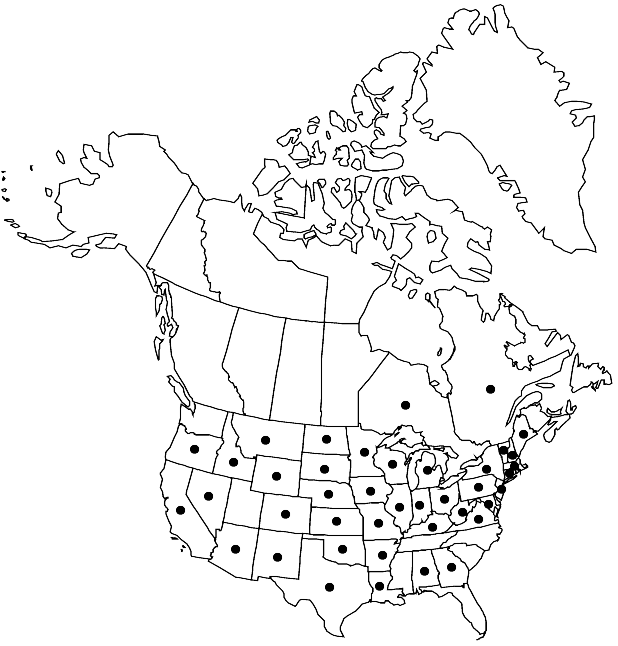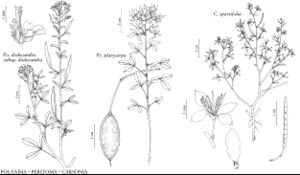Polanisia dodecandra subsp. dodecandra
Leaflets: blade apex acute to obtuse. Inflorescence bracts lanceolate to ovate. Petals white (sometimes pinkish), (3–)5–7(–8) mm. Stamens (6–)7–10(–14) mm, ± equaling or slightly longer than petals. Seeds roughened. 2n = 20.
Phenology: Flowering summer–early fall.
Habitat: Roadsides, riverbanks, gravel bars, flood-scoured shorelines, grasslands, disturbed sites
Elevation: 0-1100 m
Distribution

Ont., Que., Ala., Ariz., Ark., Calif., Colo., Conn., Ga., Idaho, Ill., Ind., Iowa, Kans., Ky., La., Maine, Md., Mass., Mich., Minn., Mo., Mont., Nebr., Nev., N.H., N.J., N.Mex., N.Y., N.Dak., Ohio, Okla., Oreg., Pa., S.Dak., Tex., Vt., Va., W.Va., Wis., Wyo.
Discussion
Subspecies dodecandra is smaller-flowered than the other subspecies and is most often found in northeastern and midwestern states. ‘White Spider’ is a cultivar sometimes offered in seed catalogues. Occurrences in New England (except Vermont) probably represent adventives from farther west; this plant is common along weedy roadsides.
Selected References
None.
